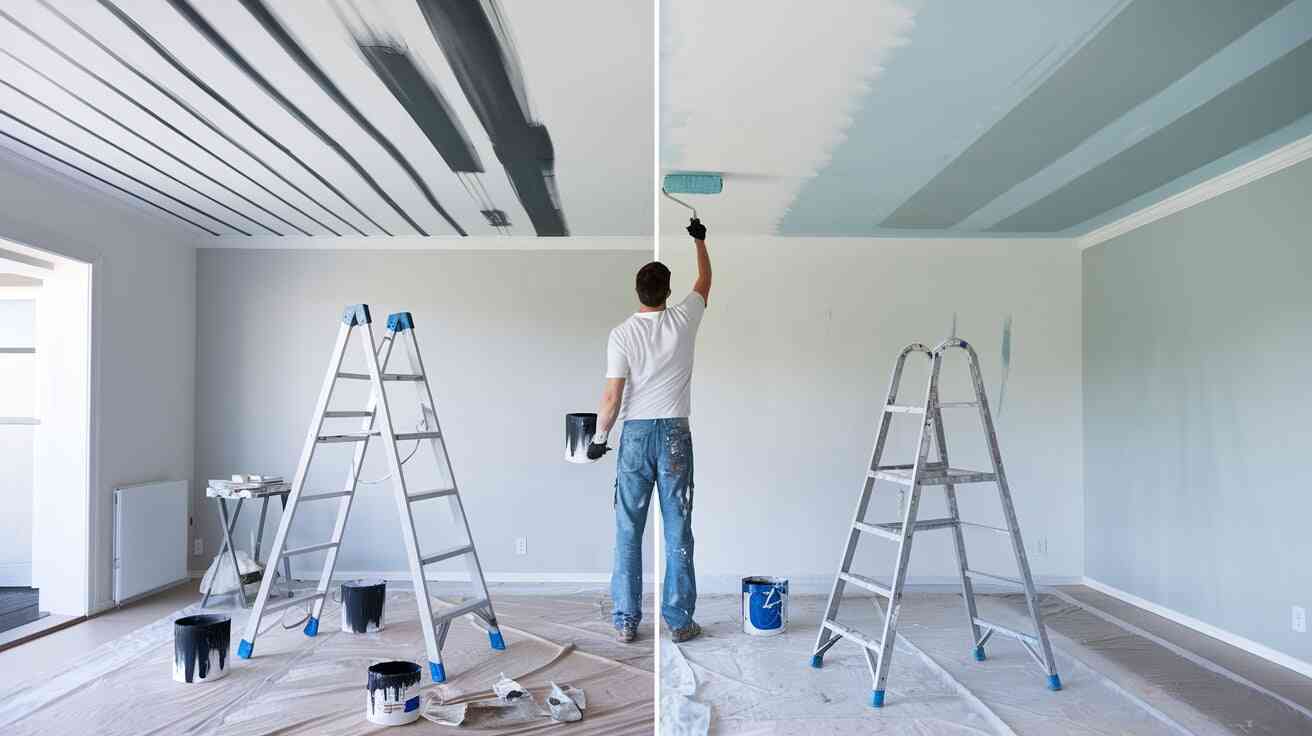Painting a ceiling can instantly refresh a room, but it’s one of the trickiest paint jobs to get right. Drips, streaks, and neck strain are common challenges—but with the right preparation and technique, you can achieve a perfectly smooth finish. Below are expert answers to common questions about painting ceilings like a pro.
1. How should I prepare a ceiling before painting?
Preparation is key to avoiding mess and uneven coverage:
- Remove or cover furniture with drop cloths
- Clean the ceiling to remove dust and cobwebs
- Patch holes or cracks with filler and sand smooth
- Apply painter’s tape to the top edges of walls, moldings, and fixtures
Find primers, fillers, and tapes in our paint collection.
2. Do I need to prime my ceiling first?
In most cases, yes—especially if:
- The ceiling has stains or discoloration
- You’re covering a darker shade
- You’ve repaired any areas with filler
A quality ceiling primer helps hide imperfections and ensures your topcoat goes on evenly. Our services team can recommend the right product.
3. What’s the best type of paint for ceilings?
Choose a flat or matte finish to minimize glare and hide imperfections. Many ceiling paints are formulated to:
- Resist drips
- Offer one-coat coverage
- Dry slowly for smoother results
Visit our paint collection for high-quality options.
4. How do I prevent paint drips and splatters?
- Use a roller with a short nap (3/8") for smooth ceilings or a longer nap (1/2"–3/4") for textured ones
- Don’t overload your roller—roll off excess paint on the tray
- Work slowly and steadily, avoiding fast back-and-forth motions
5. What’s the best technique for avoiding streaks?
- Work in small sections, keeping a wet edge to blend each pass
- Roll in one direction, then lightly finish in the same direction for uniform texture
- Avoid stopping mid-section—finish an area before the paint starts to dry
6. Should I cut in before or after rolling?
Always cut in first:
- Use a quality angled brush to paint along edges and corners
- Immediately roll the nearby section to blend brush marks into the wet paint
7. How can I make painting a ceiling less tiring?
- Use an extension pole to avoid ladders
- Take breaks every 20–30 minutes
- Wear safety glasses to prevent drips from getting in your eyes
For large jobs or hard-to-reach ceilings, consider hiring a pro via our Painter Order Form.
8. Can Randall’s help me choose the right tools and paint?
Absolutely! We offer:
- Ceiling-specific paints and rollers
- Expert product recommendations
- Colour matching and consultations
Visit our services page or contact us to get started.
Painting ceilings first—before the walls—makes clean lines easier and prevents splatters on freshly painted walls.
